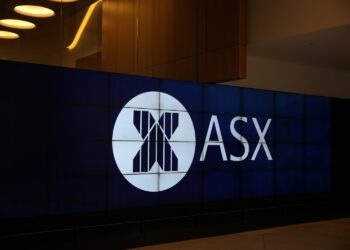AustralianSuper investment manager Alistair Barker participated in a panel discussion titled ‘Are super funds too big for Australia?’ at the NAB Superannuation FX 2015 conference in Melbourne yesterday.
Mr Barker noted that the average balanced super fund option has seen its Australian equities allocation fall from 35 per cent to 25 per cent since the global financial crisis.
“For [AustralianSuper], our allocation to overseas assets in the overall portfolio level went above 50 per cent last year.”
While AustralianSuper’s exposure to overseas assets is not as high as the $118 billion Future Fund’s (which sits at 70 per cent) it is “certainly heading in that direction”, said Mr Barker – having increased by 15-20 per cent in the last four years.
AustralianSuper’s famous tagline, ‘It’s Australian and it’s super’, would now more accurately be ‘It’s foreign and it’s super’, he said.
“Because that’s part of the trend of what’s been going on across the fund.”
In response to the question ‘Are super funds too big for Australia?’, Mr Barker said the answer is ‘no’ on Australian equities; ‘maybe’ on Australian bonds; and ‘yes’ on illiquid assets like mature infrastructure and property.
AustralianSuper’s domestic equities portfolio is currently one per cent of the Australian equities market, he explained, giving the fund room to invest further if necessary.
The biggest ‘restraining factor’ facing AustralianSuper when it comes to domestic equities is the ‘rationing’ of capacity by fund managers, he said.
“Part of the reason that we’re internalising [Australian equities funds management] is to actually get all that capacity for ourselves.”
But on the whole, ‘Are super funds too big for Australia?’ is the wrong question, he added.
“The simple reality is: our demand has not outstripped supply. For us as a fund, our allocation to Australian equities has been growing in dollar terms but falling in percentage terms.”
But when it comes to Australian bonds, the relative immaturity of the superannuation system means that supply has yet to overwhelm demand, he said.
However, in two decades’ time, he added, when the post-retirement sector is fully developed, super funds may be ‘too big’ for the Australian bond market.
Regarding illiquid assets such as mature infrastructure, Mr Barker acknowledged that super funds have definitely outgrown the local market.
“There’s no shortage of demand for mature [infrastructure] assets, but there is a shortage of demand for development assets – so [funds] will invest offshore.
“[Super] funds have been doing that for about 10 years in the infrastructure space,” Mr Barker said.
The same principle applies to property assets.
“That’s why we’ve been looking to internalise [our funds management], because we want to buy potentially 50 per cent of 100 per cent stakes in some of those [illiquid] assets offshore,” he said.







